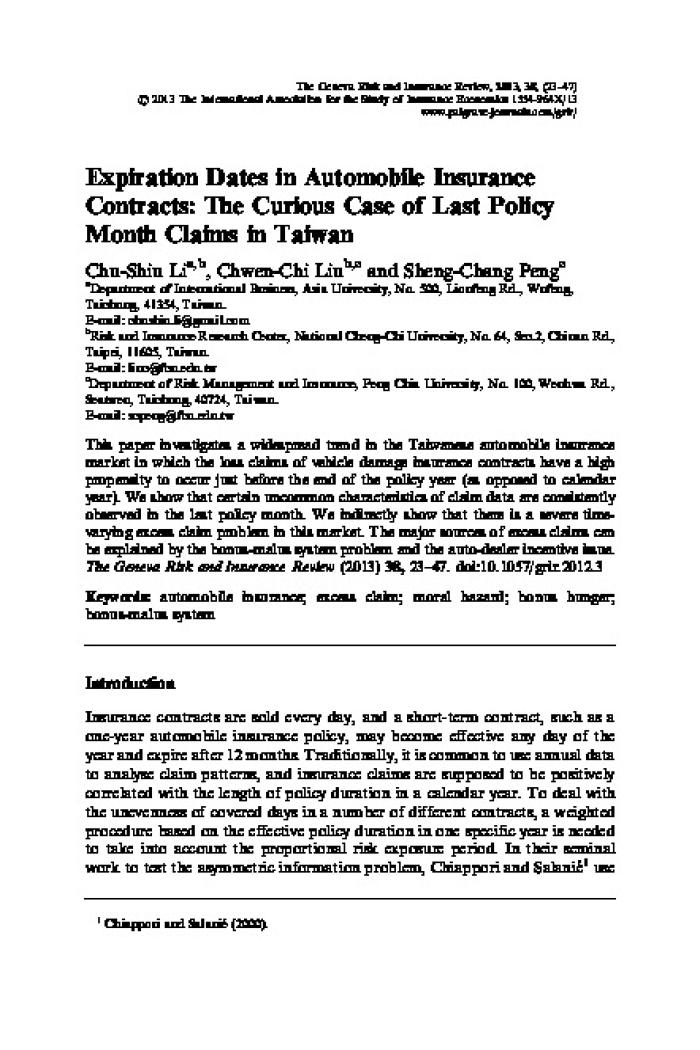Expiration Dates in Automobile Insurance Contracts: The Curious Case of Last Policy Month Claims in Taiwan

Expiration Dates in Automobile Insurance Contracts: The Curious Case of Last Policy Month Claims in Taiwan Chu-Shiu Lia,b, Chwen-Chi Liub,cand Sheng-Chang Pengc aDepartment of International Business, Asia University, No. 500, Lioufeng Rd., Wufeng, Taichung, 41354, Taiwan. E-mail: chushiu.li@gmail.com bRisk and Insurance Research Center, National Cheng-Chi University, No. 64, Sec.2, Chinan Rd., Taipei, 11605, Taiwan. E-mail: liuc@fcu.edu.tw cDepartment of Risk Management and Insurance, Feng Chia University, No. 100, Wenhwa Rd., Seatwen, Taichung, 40724, Taiwan. E-mail: scpeng@fcu.edu.tw This paper investigates a widespread trend in the Taiwanese automobile insurance market in which the loss claims of vehicle damage insurance contracts have a high propensity to occur just before the end of the policy year (as opposed to calendar year). We show that certain uncommon characteristics of claim data are consistently observed in the last policy month. We indirectly show that there is a severe time- varying excess claim problem in this market. The major sources of excess claims can be explained by the bonus-malus system problem and the auto-dealer incentive issue. The Geneva Risk and Insurance Review(2013)38,23?47. doi:10.1057/grir.2012.3 Keywords:automobile insurance; excess claim; moral hazard; bonus hunger; bonus-malus system Introduction Insurance contracts are sold every day, and a short-term contract, such as a one-year automobile insurance policy, may become effective any day of the year and expire after 12 months. Traditionally, it is common to use annual data to analyse claim patterns, and insurance claims are supposed to be positively correlated with the length of policy duration in a calendar year. To deal with the unevenness of covered days in a number of different contracts, a weighted procedure based on the effective policy duration in one specific year is needed to take into account the proportional risk exposure period. In their seminal work to test the asymmetric information problem, Chiappori and Salanie? 1use 1Chiappori and Salanie? (2000). The Geneva Risk and Insurance Review,2013,38, (23?47) r2013 The International Association for the Study of Insurance Economics 1554-964X/13 www.palgrave-journals.com/grir/